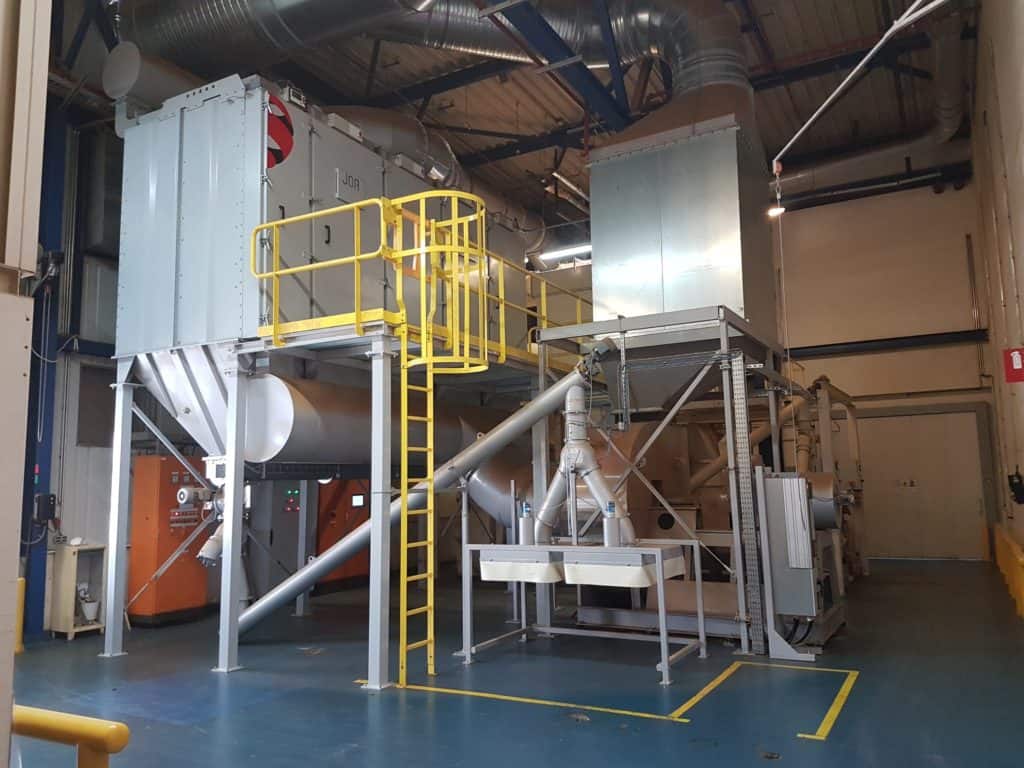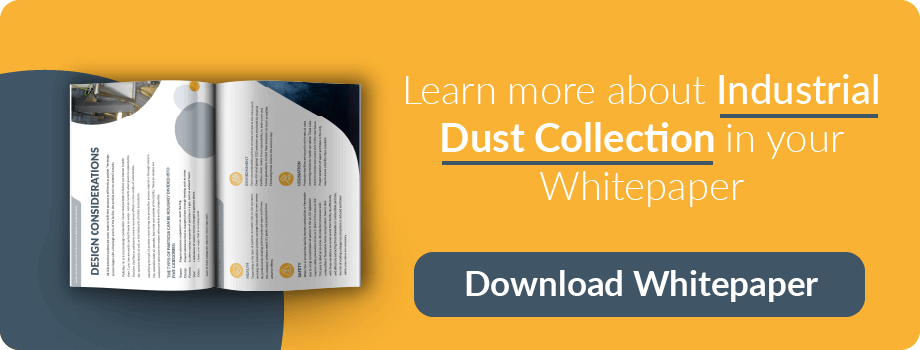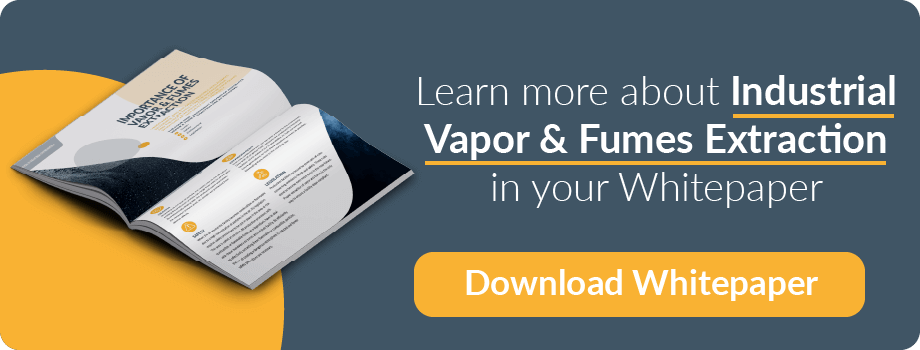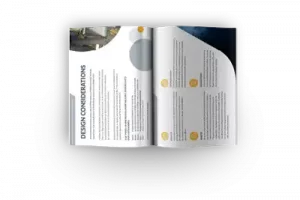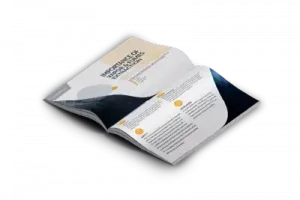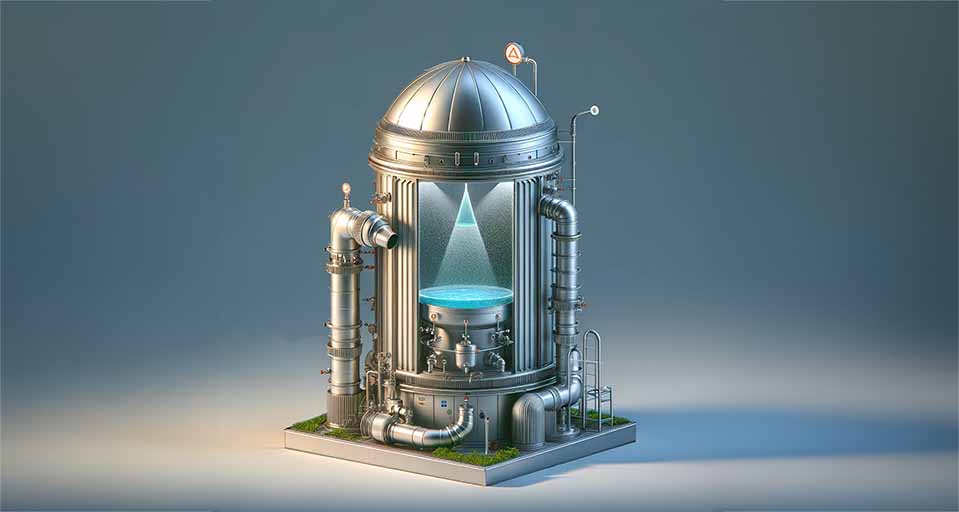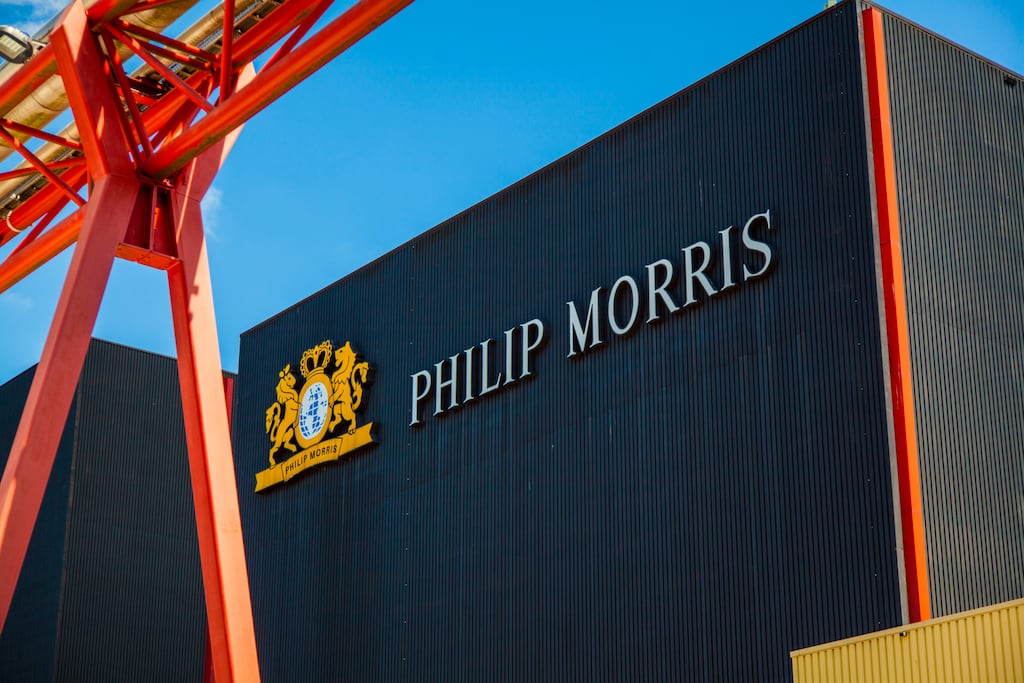An effective filtration system is the backbone of a reliable and sustainable production process. Therefore, it’s of critical importance to choose the right system. However, selecting a system can be a complex process. For a start, there is a diverse array of standard dedusting solutions in the market place – including:
- Pocket filters
- Envelope filters
- Cartridge collectors
- Bag house filters
- Pulse jet technology
So, how to start?
Motivation for industrial Dust Collection systems
A primary consideration is the factors that require the presence of an air filtration system in the first place. Broadly speaking, there are three main motivators:
- Provision of a healthy working environment for all operators
- Production efficiency/reduction of lost product
- Environmental protection and meeting of emission goals by reducing / recovering energy
Provision of a healthy and safe working environment
Over time, exposure to particles and aerosols can cause significant damage to employees’ health, including serious lung disease. Every year, multiple accidents related to combustible dust are reported. Dust filtration systems continue to carry a risk of fire and/or explosion.

Production efficiency
Accumulation of particles and aerosols not only causes physical problems for personnel, it also risks damaging equipment. The implications of this can be reduced lifespan of the equipment, requiring additional investment in replacement, and costly downtime due to failure.
A greater problem still is the potential for the equipment and surrounding floors and surfaces to become polluted, resulting in the additional costs associated with both cleaning and increased downtime.
Additionally, particularly in food production locations, there is a risk of cross contamination. This can be prevented with easily cleanable work spaces and a balanced extraction system.
Environmental protection
A topical subject, environmental protection is growing in importance. With rising public awareness of environmental matters, there is increasing pressure on governments to act. The results are clearly discernable in constantly-evolving regulations that industry must comply with; legislation such as the European Industrial Directive (IED), CO2 Footprint, your companies Sustainable Development Goals, which aims to protect both human health and the environment.
Important factors when selecting industrial air filter systems
Dust profiling
Manufacturing processes vary across the industrial spectrum, which can equal confusion when it comes to selecting the ideal dust filtration system. There are a number of things to consider, including the following:
- Where are the emission sources?
- How are the emission sources identified?
- Where exactly do you need to extract?
- What are the indoor and outdoor regulations on air quality?
- What are the dust properties associated with the facility? Is it dry? Is it moist? Is it explosive? Is the dust loading heavy? Is it hazardous to inhale/dangerous to health? What are its maximum allowable concentration (MAC) value?
Considerations of cost
A well balanced system, tailored to the environment in which it operates, will both save on energy consumption and reduce the costs of maintenance and downtime. Such a system has been shown to reach a break-even point after between three and five years.
An additional consideration is that of investment. The initial capital outlay (capital investments) for a new system can seem daunting; especially as you weigh up the costs of the fans, hoods and automation devices. However, it is very important not only consider the initial costs, but also the costs of operation (OPEX) and the Total Cost of Ownership (TCO). Additional costs like associated insurances, can in some cases be lowered considerably with reduction of risk associated with a good filtration system.
What this indicates is that, even though a high quality, bespoke system initially requires more capital outlay, in time the user will be better off as a result.
Following the rules
When selecting a dust collection system it is worth bearing in mind the regulations that you are required to comply with. Included amongst these are the following:
- Machine safety regulations. Of critical importance, these regulations ensures the safety and well-being of personnel operating the system.
- Protection against explosive atmospheres. In Europe this is covered by ATEX, a European Union directive. A similar regulation exists in the United States, set by the National Fire Protection Association (NFPA) in order to prevent injury and property loss due to fire hazards.
- European Industrial directive. An EU directive that seeks to protect human health and the environment with a process covering an integrated approach, use of best available techniques, flexibility, inspections and public participation.
In addition there are likely to be local, regional or national regulations that should be taken into consideration. The best way to ensure full compliance is to seek expert assistance when selecting a new system.
Selecting the right industrial filtration system is just the beginning
Maintaining the system
Once you have the right system in place, it is imperative that it is regularly maintained in order that it continues to perform as desired and to remain compliant.
Generally speaking, there are two types of maintenance:
- Operator maintenance. This is regular, ongoing maintenance that includes such tasks as cleaning in line with OEM guidelines
- Regular/ planned maintenance. This is carried out by an external third party, often during scheduled production stops. This also often includes inspections, corrective maintenance and replacing filters.
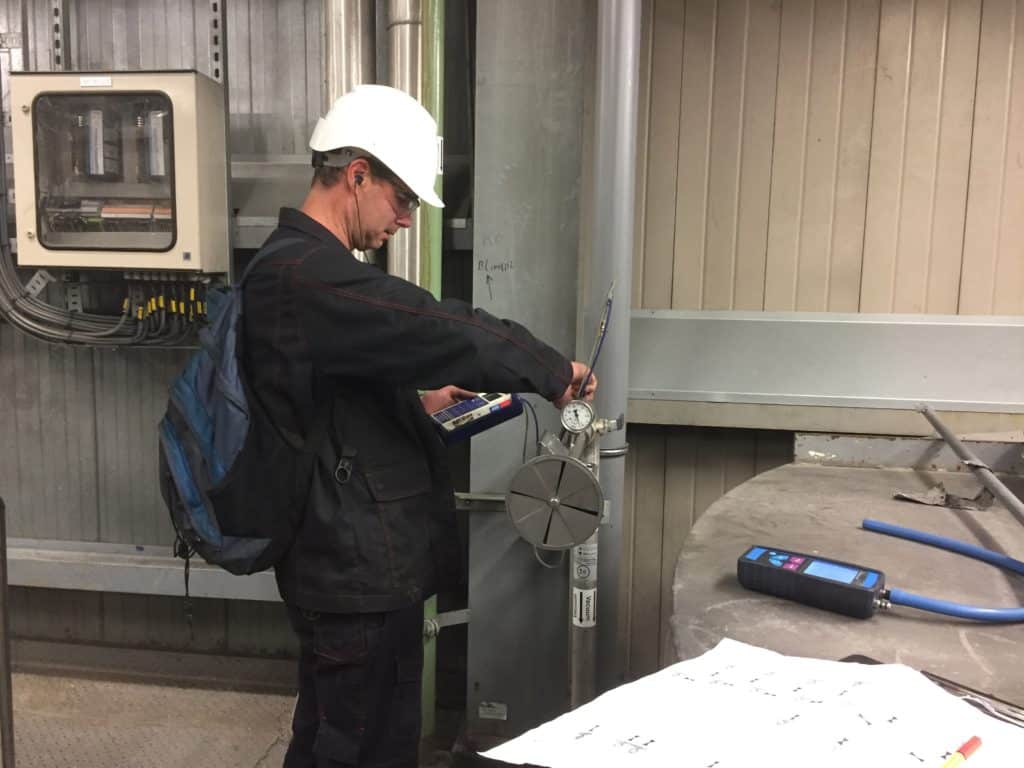
It is important to bear in mind maintenance considerations when selecting a system. The design of the system and its suitability to your facilities can play an important part in keeping maintenance to a minimum and uptime to the maximum.
Waste handling
When particles are collected by an industrial filtration system, it is inevitable that waste will be generated.
In some manufacturing processes, a combination of particles and vapor is removed by a wet scrubber, rather than a dry dust filter. In such cases, the treatment of the wastewater stream produced by the scrubber must be taken into consideration.
A tailored industrial air filtration system
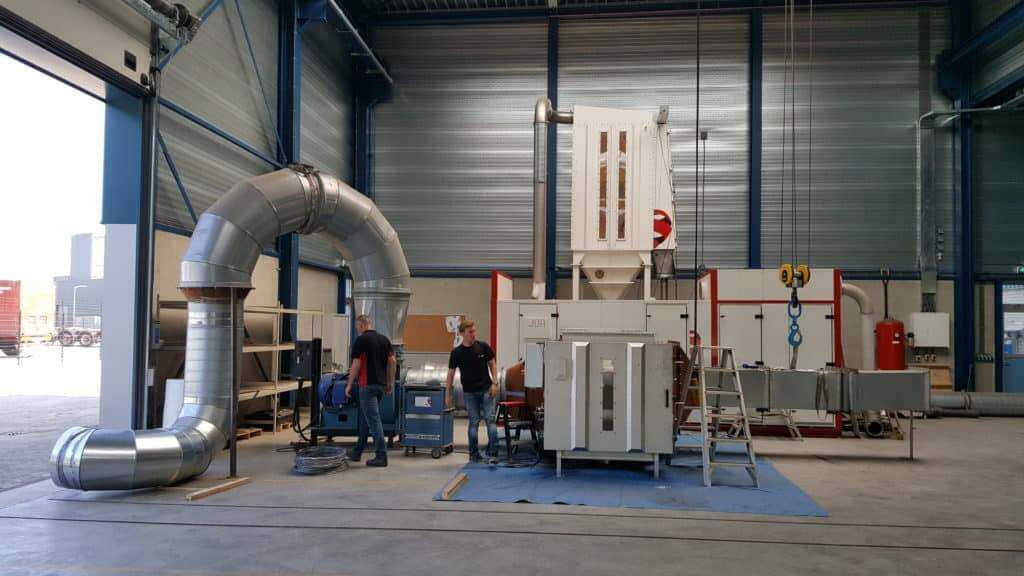
JOA has specialized in the design and installation of industrial filtration systems and de-dusting solutions for 22 years. Our engineers have extensive experience in testing, measuring and analysing particles and aerosols.
Based on the result, JOA is able to provide a customized solution that is optimally suited and effective for your needs.
To sum up, the right system should offer the following:
- Stable and balanced performance within the designed parameters
- Optimal energy consumption
- Low maintenance demand
- Low operator exposure to emissions in the factory (indoor) as well as to the external environment
- Legislative compliance
- Proper safety for your employees
- Ease of operation
To ensure this, JOA follows a proven, multi-step process:
- Consultancy
- Engineering
- Air Technical Modelling
- Realization: Building the system, implementation and commissioning
- Service: / maintenance program / spare parts recommendations
Consultancy
During a site visit, our specialists will carry out a series of measurements. These include the following:
- Inspecting specific air technical variables like:
- Existing dust and vapor extraction systems
- Velocity
- Pressure
- Temperatures
- Humidity
- Number of emissions points
- Required extraction capacity to extract dust at each emission point
- Review available extraction hoods
- Emission concentration for dust in milligrams per m3
- Flows and pressure measurements using a wide array of micromanometers, pitot tubes, anemometers and pressure meters
- Taking V0 Crit measurements to understand the interaction between the particles and the air flow to be able to a system with minimal fouling
- Dust assessment based on operator interviews so that we can predict/guarantee improved emission reduction)
Read more about Air Filtration Consultancy, creating tailor-made & effective Concept Designs
Taking all these factors into account it becomes possible to develop a system that works optimally in your production environment. Understanding these parameters opens up the way for the next step.
Engineering the optimal system: design & modelling
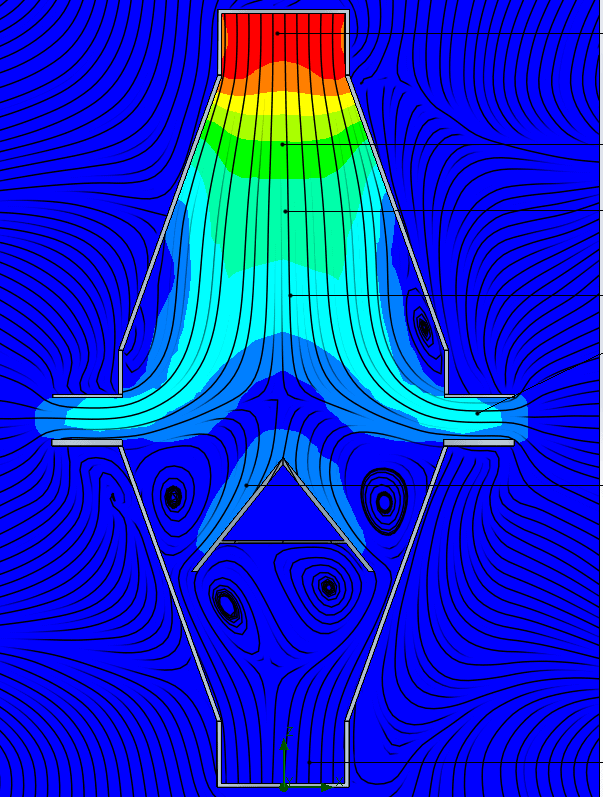
JOA applies its own Air Technical Modeling (GCM) software. Based on calculated air properties and the requirements identified by the consultancy study, we create the foundation for the design of a well-balanced system.
Read more about Air Technical Modeling
Within the consultancy study, JOA will assess the emissions points and exhaust systems in terms of dust emissions, hoods, piping layout and extraction capacities.
Engineering an optimized system, includes:
- Evaluation of current de-dusting extraction effectiveness
- Extraction points list, determine recommended extraction capacities per emission point
- Overpressure protection design for reactors by the dedusting system
- Minimum fouling design of reactor extraction connection
- Conceptual hood designs
- Conceptual isometric drawings
- Prepare GCM™ models for (multiple) systems of recommended piping layout, maintaining the optimal extraction capacities and V0Crit™ velocities
- Reporting consisting of:
- Highlights of site survey
- Extraction point list
- Air Technical (GCM) models
- Conceptual hood design
- General recommendations
- Determine implementation budget
- Face-to-face presentation of report to the site team
Required from the client for the engineering phase includes the following information:
- Equipment specifications (scrubbers/fans)
- Raw material specifications, such as densities and explosions critical parameters like Kst or Pmax values.
- Piping & Instrumentation Diagram
Based on this assessment, JOA will make conceptual recommendation to improve indoor air quality by improving the effectiveness of the extraction system.
Determining effectiveness of the hood at reactor vessels can also be part of the scope.
The benefits of this method are significant:
- Offering insight into particulate matter behavior
- Predicting future outcomes
- Removing the need for optimization after commissioning – first time right approach
- Providing a solid foundation for future development and innovation
Creating the optimal system
The information provided during consultancy and air technical scenario modelling paves the way for the development of the optimal system for the site. One that defines the crucial balance between Capital Expenses and OPEX discussed above.
It is not unusual, during a site visit, to encounter over extraction – meaning that your valuable product is being extracted to your dust collector, generating additional energy consumption and resource costs.
The same is true of under extraction, where piping becomes plugged due to use of a system not well suited to the site.
Often such things are the result of cutting corners in a bid to save on initial outlay. JOA takes a different approach. We take into account all factors, over the lifetime of the system, and consider the overall result of having the optimal system in place.
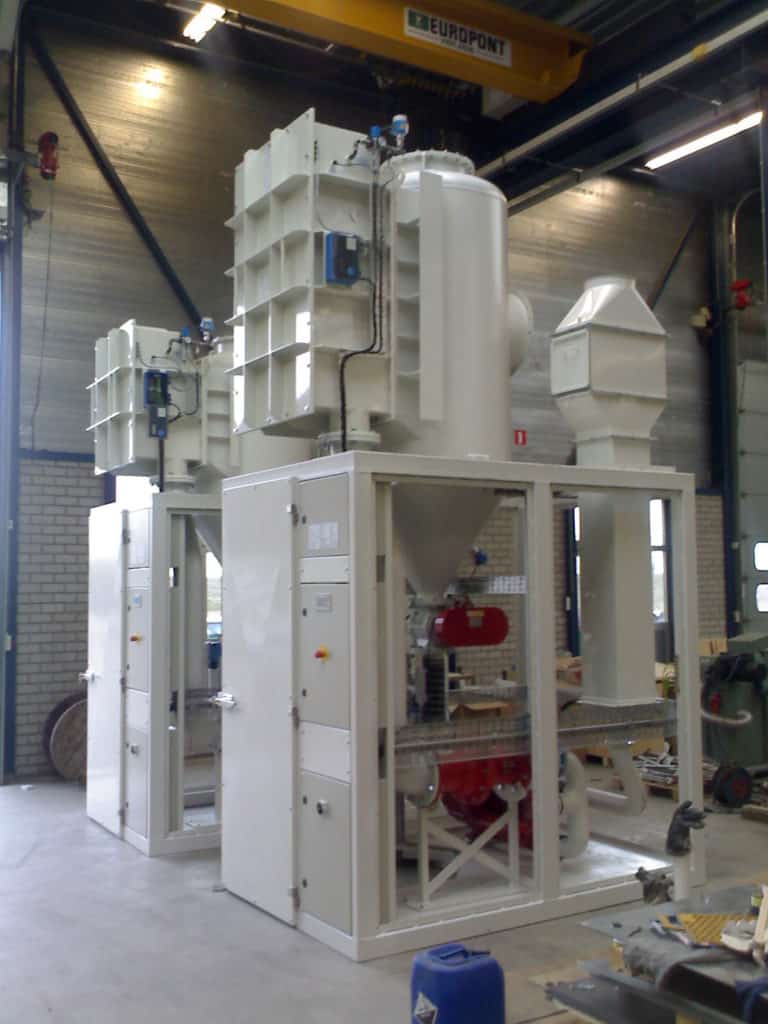
Benefits of having an optimized system in place:
- Reduction of cleaning time
- Reduced downtime resulting for optimal system in place
- Reduction of raw material costs
- Reduction of waste, energy consumption and energy recovery
- Reduced insurance costs associated with expert maintenance
- Operators not exposed to harmful and hazardous dust and vapors
If potential OPEX from all of the above is taken into account it can be significant. We have found that a comprehensive approach that takes all of these factors into consideration offers considerably reduced OPEX.
Allowing for an increase in Capital Expenses associated with such thoroughness, a financial break-even point can be expected within just 3 – 5 years.
As demonstrated above, the JOA approach lies not in the straightforward delivery of a standard product. It is our aim to serve as consultants, engineers and industrial filtration system manufacturer. An integrated approach towards the achievement of the best possible solution – first time right.
Of course, getting the right system in place is, in some ways, just the start. What comes next is of equal importance.
Spare parts recommendation
To enable maximum uptime, based on our technical experience and an on-site survey of the current projects, we provide a spare part list. This helps to prevent system failure or worn components, ensuring smooth instrument operation.
Read more about how JOA provides Service for Industrial Air Filtration Systems
Maintaining the quality
A considerable amount of time is invested in cleaning an industrial filtration system. Understanding this, JOA focuses on the development of systems that stay clean, that reduce operational expenses and increase operator health and safety.
Operator maintenance
When JOA implements a system, we provide all the information required for the effective running of the system. This includes, operating manuals, operator training, detailed instructions for conducting preventive maintenance to avoid the breakdown of parts and the occurrence of downtime. All of which are carefully passed on to the clients’ operators.
Planned maintenance
Usually carried out during a production stop, during scheduled maintenance, JOA can be on hand to assist the on-site team, with updates and assistance like certifying fire extinguishing systems and float valves, on-site support and to ensure that the performance – and therefore compliance – of the system is maintained.
We are used to working with our own trusted partners to streamline remote support or can assist a team of your preferred suppliers.
Future Innovations
We aim to continue to be the industrial dust collection system supplier that delivers the most relevant and effective solution for our clients. To these ends, we invest considerable time and energy in innovation. One of our latest patented innovations has been the development in Acoustic Agglomeration and Cleaning in Place (CiP).
Acoustic Agglomeration
Cleaning of Agglomerated particles can be costly, time consuming and lead to inefficient production lines. Acoustic Agglomeration Technology is applied to create a healthy work environment through increasing the UFP removal efficiency of (existing) electrostatic precipitators, demisters, dust filters, and air-return units. This technology is suitable for treating both ultra-fine solid particulates and liquid aerosols in exhaust air.
Acoustic Cleaning in Place
Realizing a healthy industrial work environment and preventing over-extraction of valuable product and cross-contamination are vital for your processes. By making use of high frequency sound waves, fine airborne particles collect and form into larger agglomerations. As a result of this, the efficiency of the traditional dust filter is considerably enhanced.
Find out more about Acoustic Agglomeration and Cleaning in Place here.
